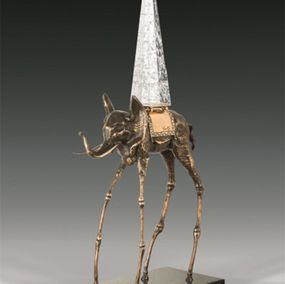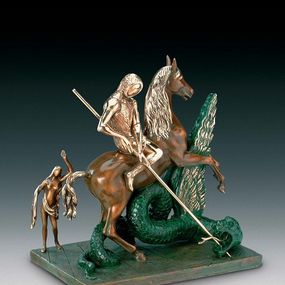
Le Portrait de La Fontaine
Salvador Dali
Print - 76 x 57 x 0.05 cm Print - 29.9 x 22.4 x 0 inch
$1,332 $1,199
Sculpture : bronze 44 x 60 x 35 cm 17.3 x 23.6 x 13.8 inch
Free returns within 14 days
Authenticity guaranteed
Learn moreNumbered and limited to 350 copies
1 copy available
Artwork signed in the mold
Sold with certificate of Authenticity from the gallery
Invoice from the gallery
Sculpture: bronze
44 x 60 x 35 cm 17.3 x 23.6 x 13.8 inch Height x Width x Depth
The sculpture cannot be displayed outdoors
Artwork sold in perfect condition
Artwork location: France
About the seller
Professional art gallery • France
Artsper seller since 2019
Vetted Seller
This seller rewards your purchases of multiple artworks

Print - 76 x 57 x 0.05 cm Print - 29.9 x 22.4 x 0 inch
$1,332 $1,199

Sculpture - 53 x 25 x 14.5 cm Sculpture - 20.9 x 9.8 x 5.7 inch
$47,151

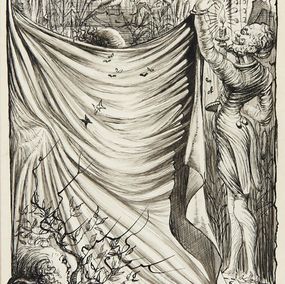
Fine Art Drawings - 15.5 x 9.5 x 0.2 cm Fine Art Drawings - 6.1 x 3.7 x 0.1 inch
Price upon request
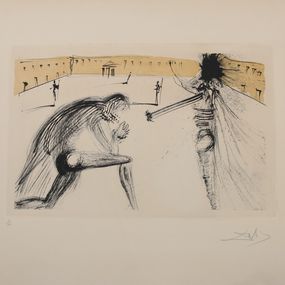
Print - 57.5 x 79 x 0.1 cm Print - 22.6 x 31.1 x 0 inch
$999
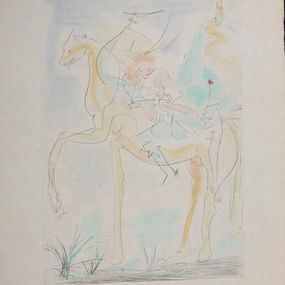
Print - 77 x 56.5 x 0.1 cm Print - 30.3 x 22.2 x 0 inch
$999
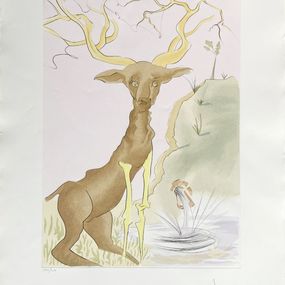
Print - 76 x 57 x 0.05 cm Print - 29.9 x 22.4 x 0 inch
$2,220

Print - 57 x 76 x 0.05 cm Print - 22.4 x 29.9 x 0 inch
$2,220

Print - 76 x 57 x 0.05 cm Print - 29.9 x 22.4 x 0 inch
$1,332 $1,199

Print - 57.5 x 79 x 0.1 cm Print - 22.6 x 31.1 x 0 inch
$999

Print - 77 x 56.5 x 0.1 cm Print - 30.3 x 22.2 x 0 inch
$999

Print - 76 x 57 x 0.05 cm Print - 29.9 x 22.4 x 0 inch
$2,220


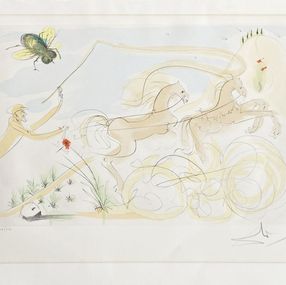

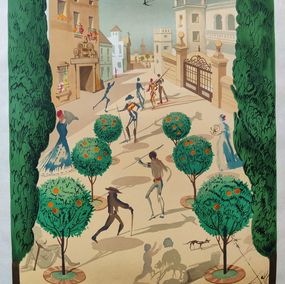
Salvador Dalí, in full Salvador Felipe Jacinto Dalí y Domenech, was born May 11, 1904, in Figueras, Spain, and died on January 23, 1989. This Spanish surrealist painter and printmaker was known for his explorations of subconscious imagery.
As an art student in Madrid and Barcelona, Dalí absorbed a number of artistic styles and displayed unusual technical dexterity as a painter. It was not until the late 1920s that two events brought about the development of his mature artistic style. First, his discovery of Sigmund Freud's writings on the erotic significance of subconscious imagery. Second, his affiliation with the Paris Surrealists, a group of artists and writers who sought to establish a “greater reality" of the human subconscious over reason. To evoke images from his subconscious mind, Dalí partook in self-induced hallucinatory states, a process he described as “paranoiac-critical".
Upon Dalí establishing this method, his painting style matured at an extraordinary rate. Thanks to Rene Magritte and Joan Miró, from 1929 to 1937, Dalí had produced the artworks that had earned him the title of the world's best-known Surrealist artist. He depicted a dream world in which commonplace objects are juxtaposed, deformed, or otherwise metamorphosed in a bizarre and irrational manner.
The famous artist dabbled in other media as well. Alongside Spanish director Luis Buñuel, Dalí made two Surrealist films—Un Chien Andalou (1928; An Andalusian Dog) and L'Âge d'Or (1930; The Golden Age)—that are similarly filled with grotesque but highly suggestive images. Dalí also wrote books; perhaps the most interesting and revealing being The Secret Life of Salvador Dalí (1942-44).
By the late 1930s, Dalí switched to painting in a more academic style under the influence of the Renaissance painter Raphael. By doing so, he was consequently expelled from the Surrealist movement. Thereafter, he spent much of his time designing theatre sets, fashionable shop interiors, jewelry, as well as exhibiting his genius for flamboyant self-promotional stunts in the United States, where he lived from 1940 to 1955.
From 1950 to 1970, Dalí painted many works with religious themes, although he continued to explore erotic subjects, childhood memories, and themes surrounding his wife, Gala. Despite their technical accomplishments, Dalí's later paintings are not as highly regarded as his earlier works.
How does Artsper protect you?
Protect your purchase
We’re here to help you collect art securely. When you browse and buy on Artsper, you benefit from our guaranteed protections.
Buy works from the best galleries
We partner with the best art galleries. All sellers on Artsper have been carefully reviewed and approved by our team. All of our partner galleries respect our code of ethics.
Know what you’re getting
Each work on Artsper is studied and validated by our team before appearing online. Get personalized support Contemporary art specialists are available by phone and email to answer all of your questions about our works of art. Get personalized advice and curated suggestions for your collection.
Resell your artworks
As a private individual, you have the possibility to resell on Artsper your works acquired on Artsper. For more information click here.
Make an offer with Artsper
Negotiate prices
Price negotiation is possible. Like in a gallery, this allows you to open a discussion and purchase your works at your preferred price.
Get our help negotiating
Let our team handle the negotiations and get back to you once the best deal is made.
Order safely
Artsper’s satisfaction guarantee
With Artsper, you have the opportunity to return a work free of charge within 14 days of receipt if it does not suit you, for whatever reason. You will then receive a full refund for your order.
Protect your purchase with Artsper’s payment partners
All credit card payments are processed by Paybox, the trusted leader in payment processing for international businesses. Paybox ensures the highest level of security.
Get specialized support from Artsper in the event of a problem
On the rare occasion that a work of art arrives in a different condition than described, we will work to administer a return, refund, restoration or exchange for you. Our team will always keep you informed on the progress of your request and will go above and beyond to offer you personalized solutions.
To benefit from Artsper’s protections you must:
Place your order using one of Artsper's payment methods.
Report any issues to Artsper within one week of receiving your work.
Provide all requested photographic evidence of the problem (including the original artwork and packaging).
Artsper’s guarantee covers the following problems:
You receive a work that’s missing a described characteristic (such as a signature or a frame)
You receive a work with different characteristics than those described at the time of purchase
You receive a damaged piece of work
Your purchase is declared lost or damaged during transit
You receive a work that is a different in color than what you ordered
Your purchase is delayed
Why buy on Artsper?
Artsper gives you access to the largest catalog of contemporary artworks, from the best galleries (200,000 works, 25,000 artists, 2,000 partner galleries).
We select the galleries with which we collaborate. This demanding selection, operated by our team of experts, offers you several guarantees:
We also facilitate the search for works according to your preferences thanks to our intelligent features such as:
Or simply thanks to our filters on the catalog allowing you to refine your searches.
Our customer service is also at your service and responds within the shortest time!
Can I negotiate the price of an artwork?
For some artworks, you can negotiate the price. If the price of the work is negotiable, you have a “Make an offer” button under the “Buy this work” one.
To submit your offer, you must make a payment of the desired amount. Your offer will then be forwarded to the gallery, which reserves the right to accept or reject it. If your offer is accepted, it means that your order is confirmed by the gallery and they will prepare the artwork for shipment. If your offer is rejected, you will be refunded the total amount paid automatically. The gallery can also propose a counter-offer for the acquisition of the artwork.
If you have any questions, please feel free to contact us: [email protected].
Where can I have my order delivered?
Artsper delivers worldwide!
However, please note that once your order reaches its destination, it may be subject to VAT or other customs fees. These charges are beyond our control and you will be responsible for paying them (this is indicated at the ‘checkout’ first step).
Select the delivery address of your choice. Please make sure that someone is present to receive your order.
If your billing address is different to your delivery address you can specify this at the checkout.
Return and cancellation
You can return the artwork without needing to provide a reason or pay a penalty fee up to 14 days after receiving your order.
In the case that the right of withdrawal is exercised in the aforementioned time frame, the price of the artwork(s) purchased and the shipping costs will be reimbursed by us as soon as the gallery has received the artwork and notified us.
Artsper will manage the return of the work and will bear the cost of returns (which will either be paid by you and refunded by Artsper or directly paid by Artsper).
The artwork must be returned in perfect condition and in its original packaging (or equivalent).
The buyer exercises his right of withdrawal directly from MUMART, by sending an email to the address: [email protected].
How can I best showcase my work?
If you have bought a painting, a sculpture or a work on paper, find expert advice on its conservation and how to best enhace it:


